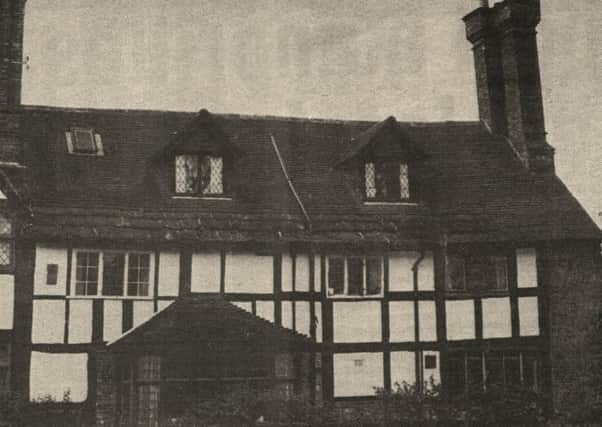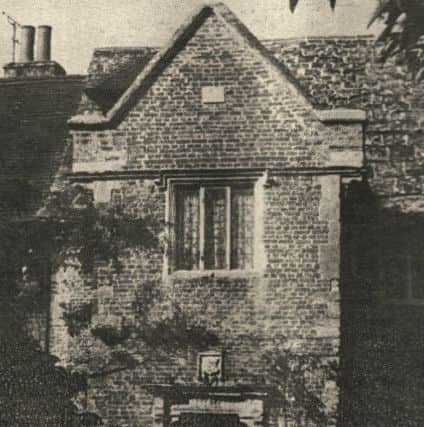Tales of buried treasure and some right Royal graffiti


The website historyofparliamentonline.org records: “He thus became the first interloper in the East India trade. He sailed with John Davis as navigator from Plymouth on December 1 1604, in the Tiger (240 tons) and the Tiger’s Whelp. He returned on July 9 1606.”
Tiger was an apt name for his ship as the beast was also part of his family crest.
Advertisement
Hide AdAdvertisement
Hide AdBut it appears Michelbourne’s goodwill mission achieved its business more by plunder than negotiation, with accounts of a Chinese ship being raided.


It was stories such as this that gave rise to the legend that treasure of some description lies concealed somewhere within the house or beneath the flower beds of Hammonds Place.
By the 16th century, numerous notable buildings were being constructed in the area. Great Ote Hall was completed by 1530 and Queen Elizabeth is known to have stayed there in 1591.
Hammonds Place, just off the A273 between Burgess Hill and Hassocks, was completed in 1566. The building bears resemblances to Westmeston Place, the home of Edward Michelbourne’s father, John, where carvings consist of Tudor roses in over-mantels.
Advertisement
Hide AdAdvertisement
Hide AdAnother similarity in the two buildings is that they both have cleverly contrived hiding places, each with a communication between the kitchen and a secret chamber at the top of the house.


These are believed to be priest holes from the days of the Reformation.
There is a legend that Queen Elizabeth also spent a night at Hammonds Place, in a small room high up in a gable.
During her stay, she apparently inscribed the letter E on a lattice window above the porch.
Advertisement
Hide AdAdvertisement
Hide AdAlthough the flourishes that surround the letter certainly resemble her elaborate signature, there is some doubt that the story is true.
In earlier times, the house was much larger than today, when it had an extensive southern side. This was demolished in the 19th century and the materials were used in the building of Clayton Priory.
Not far from Clayton Priory once stood Hammonds Mill. Unhappily for historians, the mill – a square building with three floors of brick and one of wood – was demolished in the 1970s.
The water came from a nearby bricked-up pond fed by a bypass beneath the mill approach.
Advertisement
Hide AdAdvertisement
Hide AdThe building was largely constructed in 1821 and the miller was a Mr Saunders.
The wheel was an iron overshot, 11ft diameter, 6ft wide and with 48 wooden buckets. An inscription on the metalwork read: “W Cooper. Millwright and Engineer. Henfield 1871.”
When Sir Edward, the East Asian adventurer of Hammonds Place, died in 1609, he left many handsome gifts to his children and servants.
To somebody called George Pryse he made an unusual bequest, leaving his “20 angells and cloke lined with black velvet”.
Advertisement
Hide AdAdvertisement
Hide AdOther bequests saw him leave a total of £55 to the poor of the three Sussex parishes of Clayton, Penshurst and Lickfold.
Michelbourne’s final words referred to his leaving “this miserable world”.
Surely his life cannot have been so bad living in such lovely surroundings!